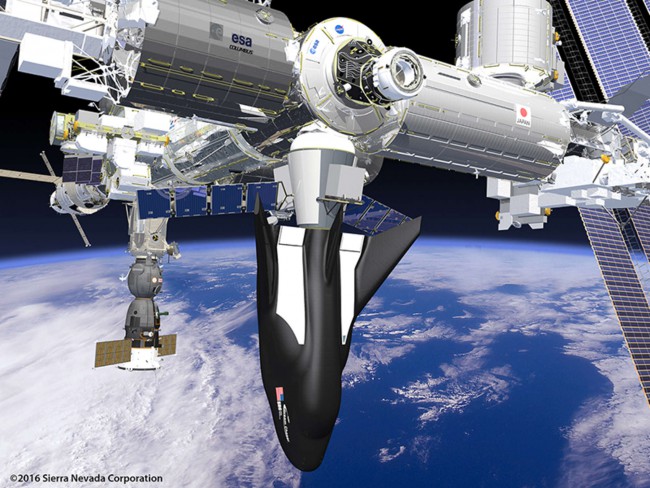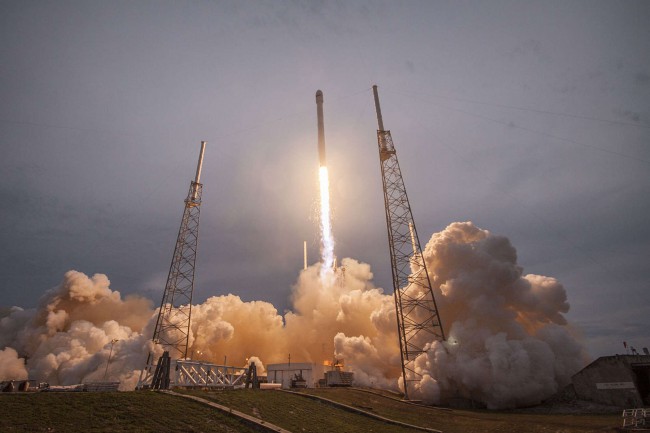
Competition in the field of commercial space exploration became a bit more tense. In the framework of the long-awaited press conference, NASA managers announced that private spaceflight company Sierra Nevada will be joining SpaceX and Orbital ATK in missions resupply the International space station. What else described in NASA? Read on.
Sierra Nevada will begin to send their chattopadhaya Dream Chaser to the international space station only in 2019, but as expected, it will be a powerful impetus for science. Mission Sierra Nevada include the option for a soft landing and they can be quickly and easily unloaded, as the Falcon 9 SpaceX. Sierra Nevada will be able to return cargo from the ISS to the Ground for 3-6 hours. It will be very cool for scientists who currently have to wait several days to get the samples.
Each company will have at least six flights to the ISS.
This is the second round of the award of contracts to commercial providers. The first round was marked by the signing of commercial contracts with SpaceX and Orbital ATK. The fact that both the current contract holder has experienced a failure (read: screwed up, blew up), played a role in determining a third candidate. Although the specifics of selection will be announced later, NASA obviously wants to make sure she will have many different routes of cargo delivery to the space station. New contracts will last until 2024.
Next month will be the next SpaceX mission to ISS (and will try to push).
The problem with Mars
It’s not all the news on NASA. If NASA really wants to send people to Mars by 2030-th year, it will have to tighten the belt. So says Aerospace Safety Advisory Panel (ASAP), a group that advises NASA on safety issues.
Her report raised some serious safety concerns on the subject of rockets and spacecraft that will carry NASA astronauts to Mars. The report also noted that in General the NASA plan for Mars too vague.
“Although the recent NASA report identifies a number of specific technologies that will be needed to accomplish the overall mission, including Solar Electric Propulsion and Deep Space Habitat, he lacks the top-level architecture and high-quality structure of the mission. Without these, it will be difficult to assess accurately the scope and sequence of the development of the necessary technologies, as well as to make sure that they will be ready for the position of the time.
Answering the question about the lack of a specific plan for the mission, NASA’s senior leadership responded that it was too early for such plans. They don’t want to design the transport or the mission with current technology, because in 20 years can happen so many changes that will dramatically change and systems that will be required to travel to the Red planet”.

Part of the problem, as the report noted, is political uncertainty. NASA scientists spent years under the Bush administration planned Constellation program — a plan to send people to the moon and on Mars — which the Obama administration is fully closed. Until the new President, the heads of NASA in General are afraid to start new major projects.
However, without presenting a clear plan for the achievement of Mars, the space Agency puts the program to travel to Mars at serious risk. ASAP believes that a well-designed mission will have benefits that outweigh these risks, and should go a long way through the future approval of the administration, the Congress and the public in General. If not, then NASA needs to work on another mission, or at least choose a different approach to the current mission.
According to the report, we (i.e. NASA) also you should think about returning to the moon before Mars. Now all want to visit the moon — from the European space Agency and Roscosmos, and to private companies. In addition, “it is unclear how NASA will take the experience on the surface in low gravity and the necessary technology without experience with the lunar surface”.
It may make sense to learn to live on the moon before you go to the red planet. But it will add unnecessary cost to the plans already limited in the Finance space Agency.
Finally, it seems that NASA will have to choose between maintaining the International space station and Mars. Continued maintenance and operation of the ISS after 2024 may postpone the Martian venture.
If you do not pay for operations on the ISS, you can free up several billion dollars a year and put them on the development of the lunar space and beyond. However, some heads of NASA (and industry partners) to publicly speak about the pros of continuing the work of the ISS until 2028 or beyond.
Before the American space Agency is facing a tough choice. NASA is often praised for the fact that the Agency does a lot of things, having a relatively small budget, but lately it seems that these possibilities it was exhausted.
The first manned private space flight in 2017 may not take place

And continue about sad. The company’s first private space flights will carry people to the International space station in 2017. In any case, as planned at NASA. The space Agency has already placed an order to Boeing and SpaceX to be the company ready for the shipping people by the end of next year.
But, according to ASAP, these dates don’t smell realistic. In the report, which compromises the work of NASA where possible, the adviser questioned the capabilities of the Commercial Crew Program, which NASA is funding the development of missiles and vehicles to transport astronauts to the ISS and by private companies.
In the report it says “high probability of delay, the first test flights”, and also raised questions about the riskiness of the program.
For security
“Maximum allowable probability of loss of crew is” Commercial Crew Program has grown with time. In an ideal world, the death of the crew should not lead more than one run of 270. But modern commercial projects do not meet such criteria, and standards were lowered to one in 200 runs.
Space debris orbiting the Earth at a speed of tens of thousands of miles per hour, is the greatest risk factor. NASA wants SpaceX Boeing and even more tried to protect the crew from space debris.

The ASAP report also says that projects commercial spacecraft “the lack of design maturity”. They just go ahead without dwelling on the analysis of threats. This analysis involves complete analysis of the spacecraft and study the risks incurred by each component. Although such reports about threats coming in, not enough of them, and their quality and damp puts in question the program. Without a thorough analysis of threats, ASAP believes that it would be difficult to identify and correct a serious problem with commercial spacecraft before it is too late.
In addition, no matter how boring, Boeing and SpaceX (and other commercial providers that may suddenly appear) must certify their spacecraft at NASA, and on this point they are too far behind.
Budget problems
The biggest risk of the program of sending crews by private companies, from the point of view of probability and severity is the threat of budget cuts, which we have already talked above. Along with the SLS rocket, the capsule “Orion”, which will send humans to Mars, Commmercial Crew Program also may face constraints on budget and schedule that will lead to the necessity of taking risky decisions.
Over the years, the program received less money than requested, and such pressure on the budget could lead to the fact that NASA “was undesirable for the crew and mission risk”. But times are changing. The 2016 budget includes sufficient finally the amount requested for NASA Commercial Crew Program.
It remains to address the issues raised ASAP. But “when the right funding programme should succeed in providing safe and effective transportation to low-earth orbit,” according to the report.
Well, let’s see what happens next.
